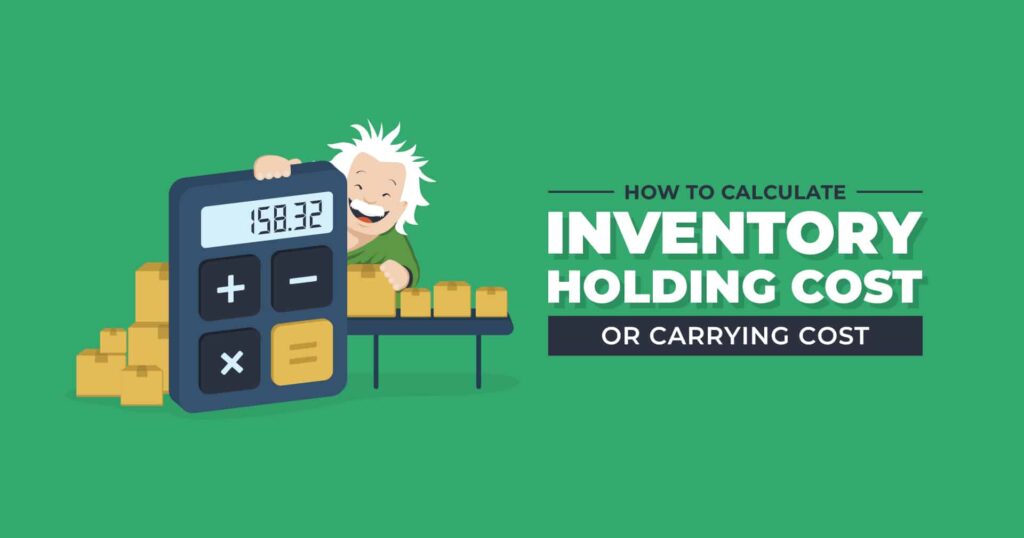Remember when you were managing your eCommerce business out of your garage? Back then you didn’t need to know about holding costs because Mom and Dad let you store your inventory for free. It wasn’t until your business took off and they kicked you out that you began incurring holding costs a.k.a. carrying costs, and needed to learn what those are . . . So what exactly is holding cost?
What is Inventory Holding Cost?
Holding cost (or carrying cost) by definition, is the cost of holding inventory in a warehouse until it is sold or removed. It is most often expressed as a percentage of total inventory costs at the end of the year, but may also be calculated incrementally per unit or per SKU. Carrying costs typically average as much as 20 – 30% of the total cost of inventory.
If you’re like most eCommerce business owners, you have a general idea of what carrying costs are, but you wouldn’t be reading this if you didn’t have a few nagging questions—like, which is it, carrying cost or holding cost? How do you calculate carrying or holding cost? Isn’t it just warehouse space? Why do I need a formula to figure that out? How does holding cost affect my bottom line?
Let’s start with the easiest question first. Carrying cost and holding cost are the same thing. They’re interchangeable terms in the industry, so feel free to use whichever term you like.
As for whether you need to know the formula, the answer is probably not—that’s what you pay an accountant for. Besides, today’s inventory management systems make tracking inventory costs much simpler. When combined with the reporting capabilities of a tech-forward fulfillment provider, the numbers you need are easily accessible. So you may not need to do the math; still, you should at least know how carrying cost is calculated and how it affects your eCommerce business.
What is Included When Calculating Carrying Cost?
Before you can calculate carrying cost, you’ll need to calculate the following numbers:
Opportunity Cost: This is the amount of capital (cash) you have tied up in unsold inventory that could have been invested elsewhere (on more profitable products, for example).
Warehousing: This includes all the costs of the physical space to store the inventory including rent, utilities, insurance, taxes, and the salaries of workers who maintain the warehouse.
Handling: These costs include the salaries of workers who directly handle your products, fulfill orders and perform audits, as well as any additional fees you pay your 3PL or fulfillment center for such services.
Depreciation: This cost represents the amount of money you lose over time as your inventory depreciates. If your product has an expiration date, quickly becomes obsolete, or goes out of fashion, depreciation costs will be higher than if your products depreciate very slowly. Depreciation costs also include write-offs for damaged or stolen inventory.
Once you have these numbers you (or your accountant) can plug them into this formula.
How is Carrying Cost Used?
Yay! You’ve calculated your carrying cost. Now what? All by itself, that number doesn’t mean much. Holding cost is just one figure used to calculate your total inventory costs for the year. If carrying costs are 20 – 30% of your total inventory costs, what makes up the other 70 – 80%?
A lot goes into calculating total inventory costs, but the main inputs are purchasing (or manufacturing) costs and setup costs. Your annual total inventory cost is used to calculate the cost of goods sold (COGS), which, when subtracted from revenue, reveals your gross profits. When inventory costs increase, margins shrink and eat into your profitability. That’s why it’s so important to understand all the costs associated with inventory and minimize them whenever possible. By itself, carrying cost may not tell you much, but when tracked over time it can identify trends that affect your bottom line.
Ways to Minimize Carrying Cost
As long as you are storing your merchandise in a warehouse or fulfillment center, you can’t avoid holding costs altogether, but there are a few ways to minimize them.
- Use inventory management tools, such as the economic order quantity formula, to help you figure out how much of each item to order, and how often, to reduce setup costs and holding costs.
- Identify slower moving products and adjust ordering quantity and frequency so you’re not carrying more inventory than you need.
- Reduce packaging size, if possible, which will reduce the space needed to store them.
- Talk to your 3PL fulfillment provider, or warehouse manager to see if they are doing everything possible (like optimized slotting) to reduce picking and packing costs.
The good news is that inventory management systems and advanced eCommerce fulfillment software can help you accomplish these tasks efficiently.
How Can ShipMonk’s 3PL Software Help?
ShipMonk’s proprietary eCommerce fulfillment software gives you the power to optimize your inventory ordering process and minimize holding costs. Here are just a few of the advantages of working with a 3PL that brings advanced inventory and order management technology together.
- Integrate fulfillment operations with inventory management systems, accounting, and ERP systems in real time for more accurate inventory management.
- Easily track metrics such as inventory turnover or cost per unit.
- Receive automatic notifications when stock is running low.
- Set reorder points for each SKU and automate the reordering process.
- Identify trends and generate reports for more accurate forecasting.
- Get 24/7 access to real-time order status, inventory levels, and KPIs.
The Cost of Success
When starting your eCommerce business, knowing formulas and fancy inventory metrics may not seem like a big deal. But as your eCommerce business grows, not knowing the basics of holding or carrying costs, and other vital inventory calculations, can cost you margins and profits. Good news—mastering your inventory and controlling your bottom line doesn’t have to be mind-bending hard. Time to reevaluate with ShipMonk.
Are you paying more in holding costs or carrying costs than you should be? There’s one way to find out for sure! Contact ShipMonk for a software demo or speak with one of our 3PL fulfillment experts to get a better handle on controlling your inventory costs today.





